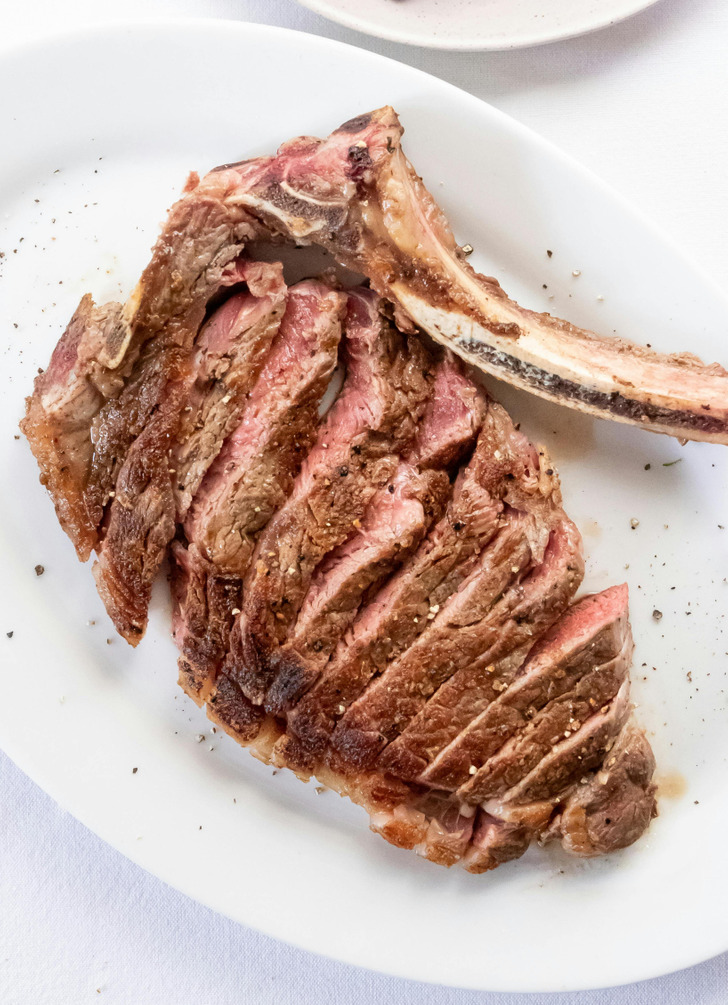Thanks for the tips very helpful will definitely be using them
Pro Tips to Dodge These Common Cooking Errors
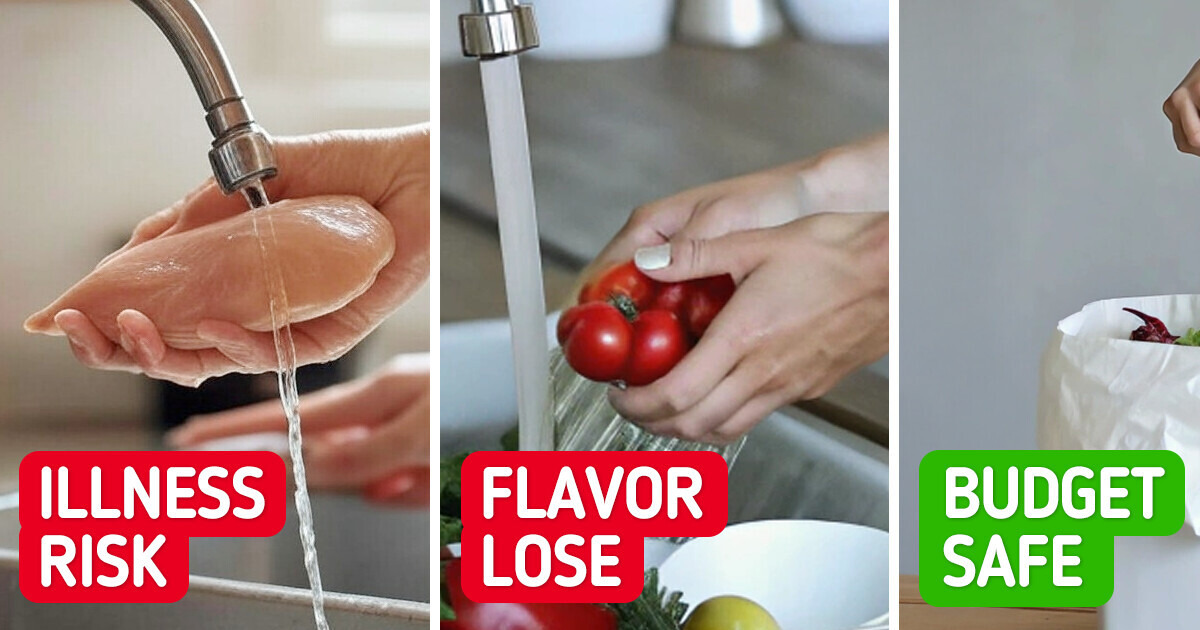
Cooking can be fun, but small mistakes can ruin a meal. Maybe your pasta turns out too mushy, or your sauce tastes bland. Pro chefs have tricks to avoid culinary problems and make every dish delicious. Let’s learn their secrets.
1. Washing Chicken With Water
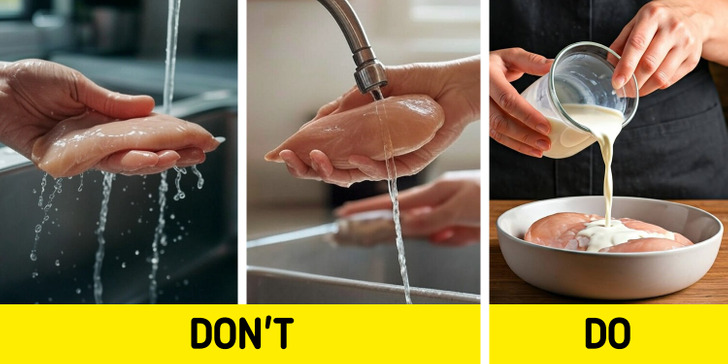
Washing chicken with water is a common practice in many kitchens, but it is actually discouraged by food safety experts for several important reasons. Instead, consider marinating chicken in milk to enhance both safety and flavor.
Reasons to Avoid Washing Chicken with Water:
- Increased Risk of Cross-Contamination: When you rinse chicken under running water, tiny droplets can splash onto nearby surfaces, utensils, and other foods. This can spread harmful bacteria like Salmonella and Campylobacter, increasing the risk of foodborne illness.
- Ineffective at Removing Bacteria: Washing chicken does not effectively remove bacteria. In fact, it can sometimes spread bacteria around rather than eliminate them. Cooking chicken to the proper internal temperature (165°F or 74°C) is the only reliable way to kill harmful pathogens.
- Unnecessary Step: Rinsing chicken is unnecessary if you are sourcing it from a reputable supplier. Most commercially sold chicken is already cleaned and does not require additional washing.
2. Throwing Out Vegetable Scraps Without a Second Thought
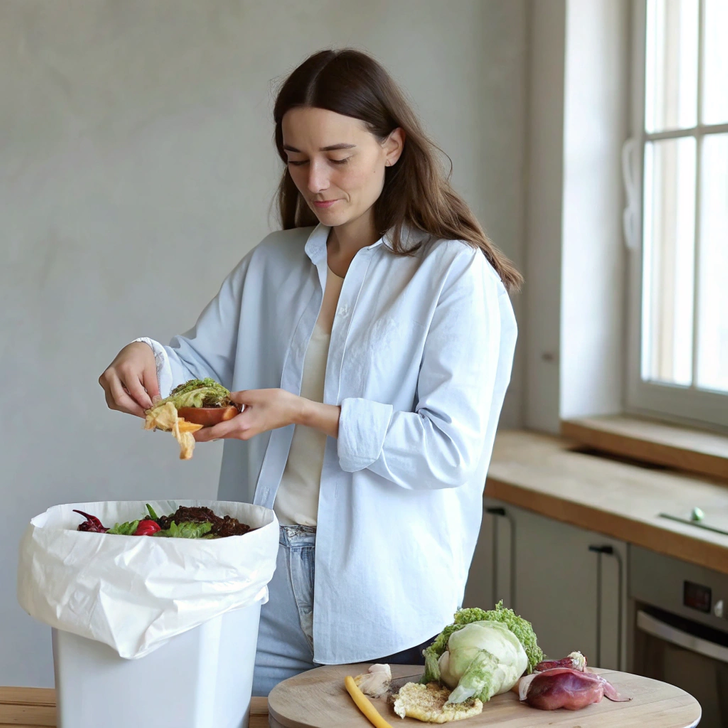
Mistake: You’re wasting valuable nutrients, flavor, and money by tossing peels, stems, and leaves into the trash.
Chef’s Fix:
- Make Flavor-Packed Broths: Save onion skins, carrot peels, and herb stems to create homemade veggie stock that beats any store-bought version.
- Repurpose in Dishes: Try finely chopping broccoli stems into stir-fries or blending herb stems into pesto.
👉 Mindful cooking helps your budget and reduces kitchen waste.
3. Overcrowding the Pan
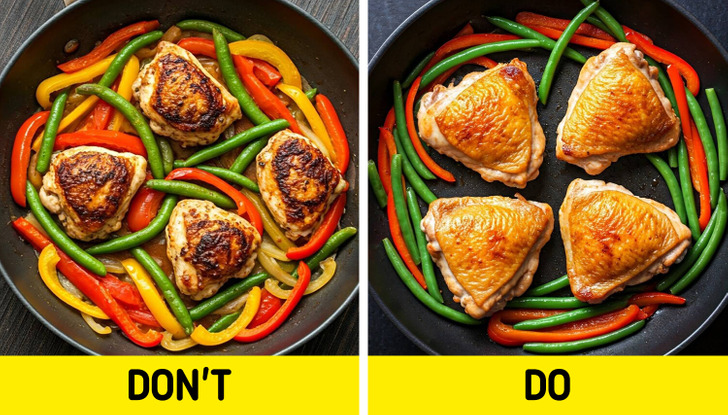
Mistake: Crowding the pan with too much food can cause ingredients to steam rather than sear, resulting in soggy dishes.
Chef’s Fix:
- Cook in Batches: Chefs recommend cooking in batches to ensure that each piece of food has enough space to brown properly. This also allows you to control the cooking process more effectively.
- Use the Right Size Pan: Choose a pan that provides enough space for your ingredients to spread out, promoting even cooking and better browning.
4. Overcooking Vegetables
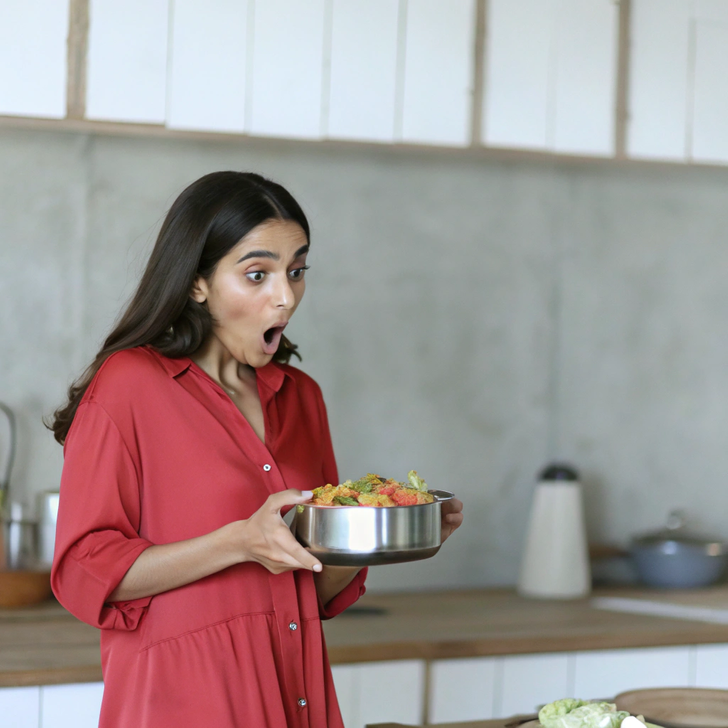
Mistake: Many people boil or steam vegetables until they are soft and mushy, which can lead to a loss of nutrients and flavor.
Expert Fix:
- Blanch or Sauté: Try blanching vegetables in boiling water for a short time and then plunging them into ice water to preserve their color and crunch. Alternatively, sautéing vegetables in a bit of olive oil can enhance their flavor and texture.
- Al Dente is Key: Aim for a crisp-tender texture, often referred to as “al dente,” to retain nutrients and a pleasant mouthfeel.
5. Not Letting Meat Rest After Cooking
Mistake: Cutting into meat immediately after cooking can cause the juices to spill out, resulting in a dry dish.
Expert Fix:
- Rest the Meat: Try letting meat rest for at least 5–10 minutes after cooking. This allows the juices to redistribute, ensuring a juicy and flavorful result.
- Tent with Foil: To keep the meat warm while it rests, tent it loosely with aluminum foil.
6. Ignoring the Importance of Acid in Dishes

Mistake: If your meals taste flat or boring, it’s likely missing a splash of acid to balance the flavors.
Chef’s Fix:
- Use Vinegars and Citrus: Pro chefs recommend finishing dishes with a dash of lemon juice, lime, or a drizzle of balsamic vinegar to brighten flavors instantly.
- Don’t Forget Pickles: Add pickled onions or capers to sandwiches, tacos, or salads for an acidic punch.
👉 A dish without acid is like music without melody.
7. Overmixing Dough or Batter
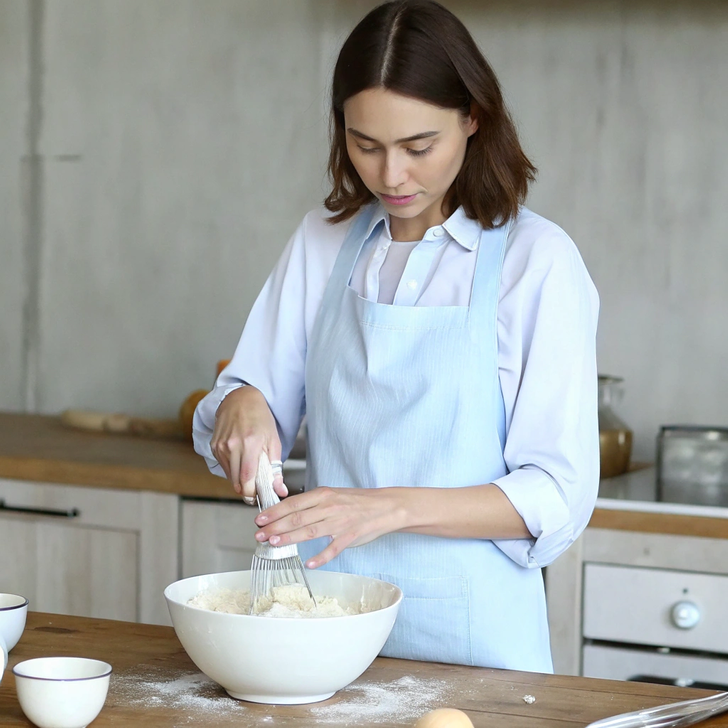
Mistake: Overmixing can lead to tough, dense baked goods because it develops too much gluten.
8. Not Soaking the Vegetables in Cold Water for About 10 Minutes Before Using
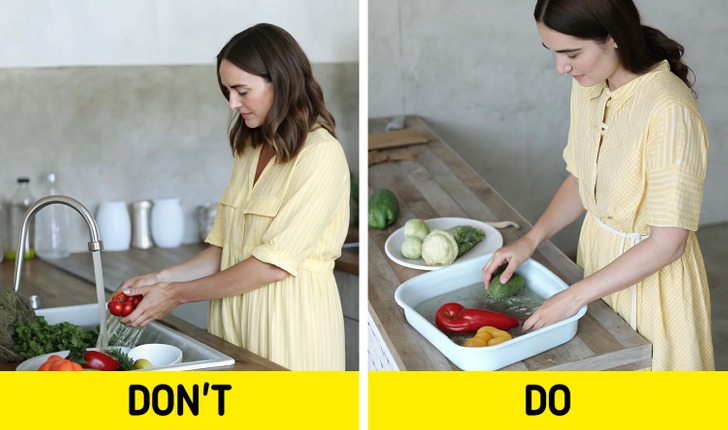
Mistake: Allowing your vegetables to become limp and lose their crunch can result in a lackluster salad that doesn’t impress.
- Chef’s tip: To achieve a crisp and fresh salad, soak your vegetables in cold water for about 10 minutes before using them. This simple trick can rejuvenate their texture and enhance their natural flavors.
9. Not Cleaning as You Go
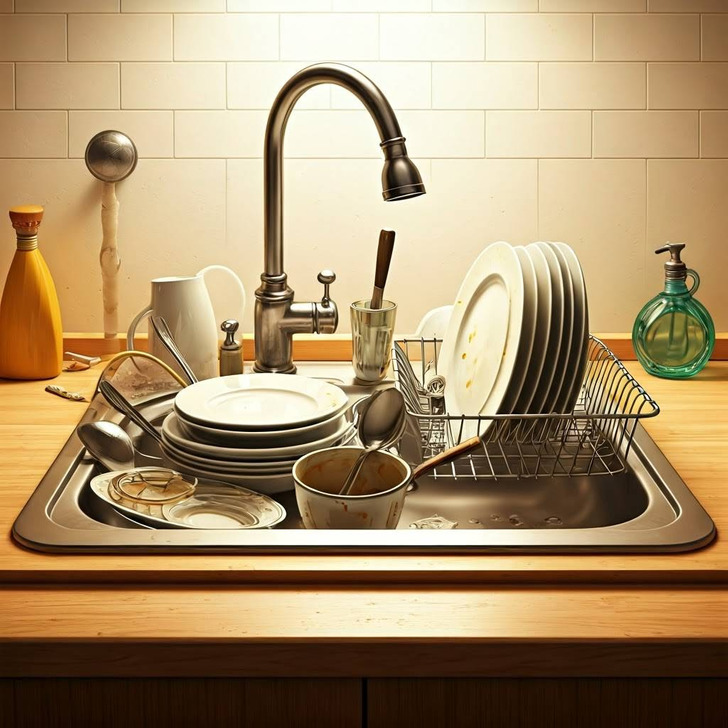
Mistake: A cluttered workspace can make cooking more stressful and less enjoyable.
Chef’s Fix:
- Clean as You Cook: Try cleaning as you go. This not only keeps your kitchen tidy but also makes the cooking process more efficient.
- Organize Your Workspace: Keep your tools and ingredients organized and within reach. This reduces the time spent searching for items and allows you to focus on the task at hand.
10. Sticking with the Same Old Cooking Oil for Everything
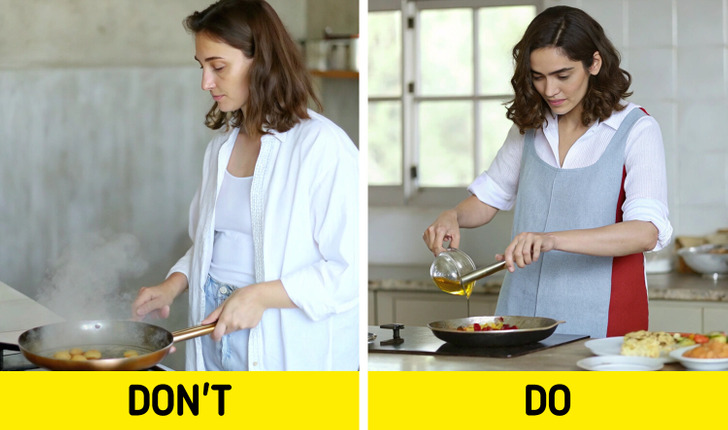
Mistake: Using one oil for all cooking can limit flavor and even ruin certain dishes.
Chef’s Fix:
- Match Oil to Purpose: Use extra virgin olive oil for dressings and low-heat cooking, avocado oil for high-heat searing, and coconut oil for baking.
- Experiment: Chefs love walnut or sesame oil for nutty flavors in salads or Asian-inspired dishes.
👉 Don’t let the wrong oil sabotage your flavors.
11. Adding Oil Directly to Mushrooms
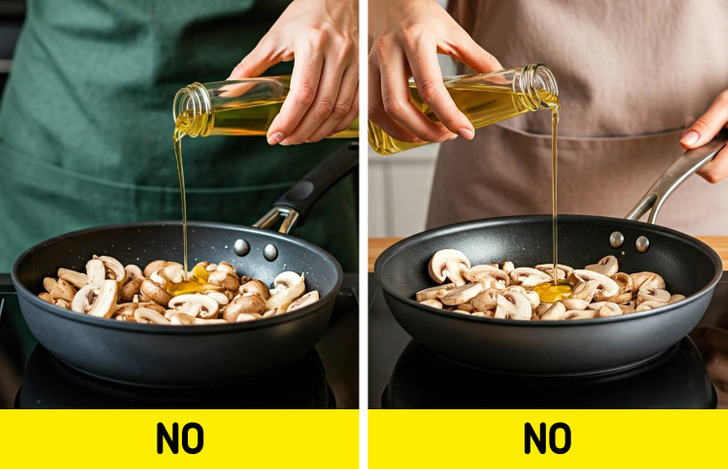
- Soggy Texture: Mushrooms release a lot of moisture when they hit the heat. If you add oil first, the mushrooms will steam in their own juices, resulting in a soggy texture rather than a nice, browned exterior.
- Uneven Cooking: The water released by the mushrooms can cause the oil to splatter, making the cooking process less controlled and potentially dangerous.
- Less Flavor Development: Soggy mushrooms don’t develop the rich, savory flavors that come from browning (also known as the Maillard reaction).
Chef’s Fix:
- Dry Cooking Method: Start by heating your pan over medium-high heat. Once the pan is hot, add the mushrooms without any oil. The mushrooms will release their moisture and start to brown as the water evaporates.
- Add Oil Later: Once the mushrooms have released their moisture and started to brown, you can then add a small amount of oil or butter. This will help them finish cooking and develop a nice, caramelized exterior.
- Seasoning: Add salt and any other seasonings after the mushrooms have started to brown. This helps draw out moisture and enhances the flavor.
Comments
Related Reads
20+ Celebs Whose Sassy Red Carpet Looks Take Our Breath Away

8 Job Interview Tips to Help You Impress Your Recruiter

“Thank You for Every Woman Above 40!” Gwyneth Paltrow’s Unfiltered Face Creates Massive Reaction

17 People Whose Childhood Photos Are Guaranteed to Make You Laugh

Psychologists Reveal 8 Quiet Marriage Killers You Might Be Overlooking

8 Times Movies Totally Fooled Us Into Believing Nonsense

19 People Who Had a Truly Terrible Day — But Still Managed to Laugh Through It

Turn Heads Every Day With These 12+ Easy Fashion Upgrades

12 Curious Secrets About Figure Skating That Only a Few People Know

15 Celebrity Transformations That Mean More Than You Think

16 People Share Heartfelt Photos Proving Time Is the Greatest Storyteller

14 Celebrities Whose Appearance Has Evolved Over the Past Decade

